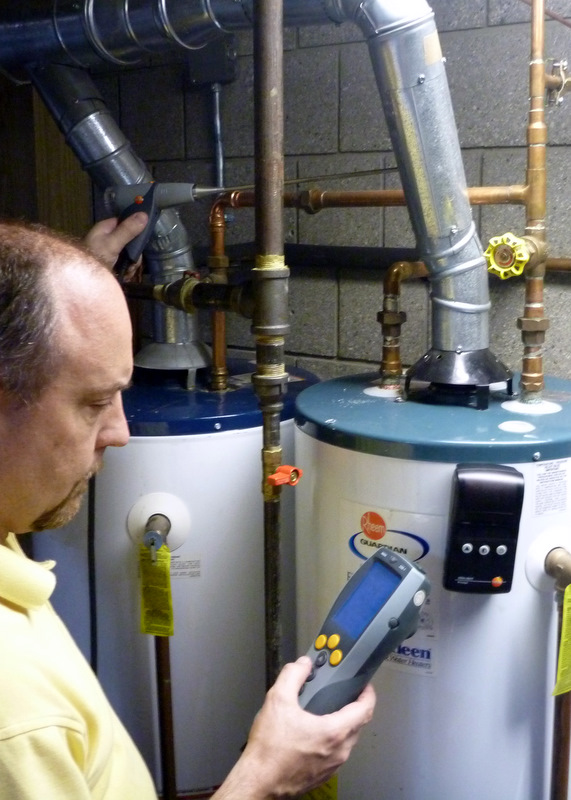
Performing a Draft Test
Performing a Draft Test:

Note: If the appliance and chimney are cold it can take up to five (5) minutes to establish draft. (a spill switch must trip within ten (10) minutes if spillage occurs. A system that has been under operation should have or establish draft very quickly. If draft induced and atmospheric appliances are common vented, always verify the atmospheric appliance is not spilling when both appliances are operating. Verify that flue gasses are not spilling through the draft hood on the atmospheric appliance when it is operating by itself. If both appliances are common vented, both should be draft tested. Kitchen exhaust fans, basement doors opening or closing etc, should not affect draft. If multiple draft-induced appliances are common vented, assure that spillage does not occur through the heat exchanger and out through the burner openings of the adjoining appliance while it is in its stand-by position (OFF)
Spillage and Draft Tests
Spillage and draft tests must be completed for all natural and induced draft space heating systems and water heaters. Spillage and draft must first be tested under worst-case conditions and then repeated for natural conditions if the appliance fails under worst-case.
When a chimney is shared by multiple appliances the appliance with the smallest Btu input rating shall be tested first and remaining appliances tested in order of increasing input rate.
Induced draft heating systems shall be checked for spillage at the base of the chimney liner or flue. If a chimney is shared between and induced draft heating system and a natural draft water heater, spillage shall be checked at the water heater draft diverter. If the furnace is common vented with another furnace, make sure that flue gasses are not being directed out the second furnace during the off cycle
| Outside Air Temperature | Minimum Draft Pressure Standard (Pa) |
| <10 | -2.5 |
| 10-90 | (T_out /40) - 2.75 |
| >90 | -.05 |
